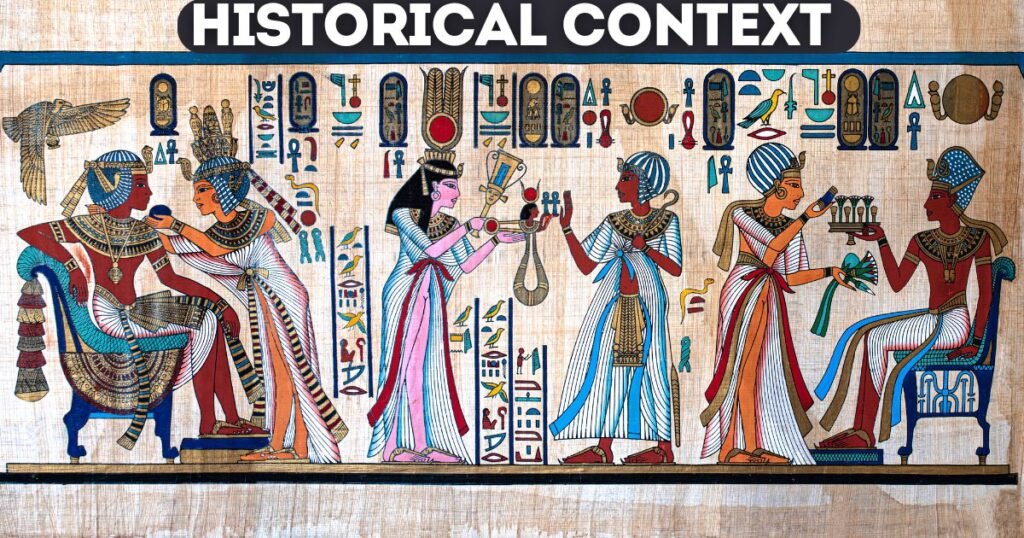Unlocking the Secrets of Ancient Artz: A Journey Through Time

Unlocking the secrets of ancient artz helps us appreciate human creativity. These art forms reflect the cultures and beliefs of earlier societies. By studying these works, we gain valuable insights into history. This journey reveals stories that connect us to our ancestors.
Exploring ancient artz enriches our understanding of different cultures and traditions. Each piece tells a unique story that deserves our attention and respect. Let’s embark on this enlightening adventure together.
What is ancient artz?
Understanding Ancient Artz
Ancient art encompasses creative expressions from historical cultures around the world. These include paintings, sculptures, pottery, and textiles. Each art form reflects the values and beliefs of its creators. People use ancient art to explore their time’s social and political contexts.
The Significance of Ancient Artz
Ancient artz serve as vital historical documents that tell stories of past societies. They allow us to connect with our human heritage in unique ways. Each artifact provides insights into the everyday lives of ancient people. The study of ancient artz enhances our appreciation for cultural diversity and creativity.
Importance of preserving cultural heritage
Protecting Our Shared History
Preserving cultural heritage ensures that future generations understand their roots. These practices maintain the rich diversity of our world’s cultures. Each tradition contributes to our collective identity and unique human experience. By safeguarding these elements, we honor those who came before us. The importance lies in effectively passing knowledge from one generation to another.
Fostering Cultural Identity
Cultural heritage instills a sense of belonging among community members. Communities thrive when they celebrate their distinct customs and traditions together. Pride in cultural identity boosts individuals’ self-esteem and community ties. Preserving heritage nurtures mutual understanding among different cultures. This understanding fosters respect and appreciation for diversity globally.
Supporting Economic Development
Cultural heritage drives tourism, generating income for many communities worldwide. Visitors seek authentic experiences that reflect local traditions and history. Hence, preserving heritage can lead to job creation and economic growth. Increased interest in traditional crafts and practices may benefit local artisans. This financial support helps sustain communities while honoring their cultural roots.
Historical Context
Brief History of Ancient Artz Across Different Civilizations

Ancient artz originated in various civilizations, each developing unique styles and techniques. Early humans created cave paintings to express their lives, spirituality, and surroundings. Civilizations like Mesopotamia recorded their stories through intricate carvings and pottery.
Ancient Egypt excelled in creating sculptures and grand monuments to honor their gods. In Asia, cultures crafted beautiful silk textiles and pottery with remarkable artistry. The artistic contributions of these societies shaped the way art evolved over time.
Key Periods in Art History
Art history features significant periods, starting with Ancient Egypt and its iconic pyramids. The Greeks introduced naturalism in their sculptures, focusing on beauty and human form. Ancient Rome was built upon Greek influences, creating monumental architecture like the Colosseum.
The Byzantine period emphasized religious imagery in its mosaics and illuminated manuscripts. The Middle Ages heralded the rise of Gothic art, with its towering cathedrals and stained glass. Each period reflects its time’s social, political, and cultural values.
Major Art Forms
Visual artz
Painting Techniques and Styles
Visual art primarily encompasses painting, which can profoundly express emotions and ideas. Artists use diverse techniques, such as watercolor, oil, and acrylic, to create their works. Each painting style has unique characteristics, shaping how viewers interpret the artwork.
Impressionism focuses on light and atmosphere, capturing moments fleetingly. Cubism breaks objects into shapes, presenting multiple perspectives in a single piece. Abstract art conveys feelings through colors and shapes, often without recognizable subjects.
Sculpture and Its Significance
Sculpture provides a three-dimensional representation of artists’ visions and concepts. Artists create sculptures from various materials, including clay, marble, metal, and wood. This art form plays an essential role in commemorating historical figures and events. Many sculptures serve as public memorials, reminding us of shared human experiences.
Artists use sculpture to explore identity, nature, and society through physical proportions. By engaging with sculptures, audiences develop emotional connections and insights into different cultures.
Performing artz
Theatre and Dance Traditions
The theatre showcases storytelling through live performances, combining acting, music, and stagecraft. Various theatrical styles emerge globally, reflecting diverse cultural narratives and experiences. Traditional dance forms illustrate stories through movement, often representing community histories and values.
Both theatre and dance engage audiences, evoking emotional responses to complex themes. These performing artz promote cultural exchange, allowing artists to share their heritage with new audiences. Live performances foster a sense of community and belonging among spectators and performers.
Music and Its Cultural Relevance
Music plays a vital role in cultural expression, shaping community identity and experiences. Different genres, such as folk, classical, and contemporary, showcase unique cultural narratives and traditions. Musicians use rhythm, melody, and harmony to evoke emotions and tell stories.
Music brings people together, fostering shared experiences across diverse backgrounds and cultures. Songs often carry deep meanings, reflecting societal issues, celebrations, and human emotions. The cultural relevance of music shapes contemporary society, influencing trends and social movements.
Literature and Poetry
Language and Storytelling
Literature represents humanity’s collective knowledge and experiences through written language. Storytelling transcends generations, allowing authors to share insights into their worlds. Different genres, from novels to poetry, provide diverse avenues for expression and exploration.
Writers use language to create vivid images and evoke emotions. Characters and plots resonate with readers, enabling connections between their lives and the narratives. This engagement encourages critical thinking and imagination, shaping cultural perspectives.
Impact on Contemporary Literature
Contemporary literature reflects societal changes and responds to modern issues and challenges. Authors tackle themes of identity, technology, and globalization, creating relatable narratives for their audiences. The influence of historical texts on modern writing fosters a rich literary dialogue across time.
Diverse voices in literature bring authenticity to stories, enriching the literary landscape. Contemporary readers seek inclusion and representation in literature, shaping future narratives and themes. Literature remains a powerful medium for social change and cultural reflection.
Techniques and Materials
Common Materials Used in Ancient artz
Ancient artists often used natural materials available in their surroundings. They crafted tools from stone, wood, and bone. Pigments for colors came from minerals, plants, and animal products. Clay served as a primary medium for pottery and sculptures. Fabrics and textiles were woven from plant fibers and animal hides.
These materials reflected local resources and cultural practices of ancient societies. Each material had unique properties that influenced the final artwork. Understanding these materials helps us appreciate ancient artistry’s complexities and innovations.
Art Techniques That Have Stood the Test of Time
Many ancient art techniques remain relevant and practiced today. Techniques such as fresco, tempera, and oil painting inspire artists. Sculpting with stone and metal showcases timeless craftsmanship skills. Weaving techniques produce intricate textiles that display cultural significance.
Like wheel throwing and hand-building, pottery methods retain their value in modern art. These enduring techniques link contemporary artists with their historical predecessors. Artists adapt ancient methods to explore new forms of expression, and knowledge of traditional techniques enriches the artistic vocabulary of modern creators.
Tools and Their Evolution Over Time
Artistic tools have evolved significantly since ancient times. Early artists used rudimentary implements fashioned from stone and bones. As societies advanced, metal tools became more prevalent and sophisticated. Brushes made from animal hair enabled finer detail in the painting.
The invention of the wheel revolutionized pottery making and crafted more complex forms. Over time, tools have developed alongside art techniques to enhance creativity. Modern artists utilize a variety of tools tailored to specific mediums. Understanding this evolution highlights the ongoing relationship between tools and artistic expression.
Cultural Significance
The Role of Art in Society and Religion
Art serves as a powerful tool for expression within various cultures. Artists effectively convey beliefs and values through their works. Many societies use art to express community identity and shared experiences. Religious art often depicts narratives from sacred texts and traditions. Rituals and ceremonies frequently incorporate artistic elements to enhance significance. Art fosters meaningful connections among individuals and communities.
Art as a Reflection of Social Norms and Values
Art reflects the prevailing social norms and values of its time. Artists capture societal dynamics through their creative lens, offering insight. Many artworks challenge or reinforce social standards, sparking meaningful conversations.
By mirroring reality, art significantly influences people’s perceptions and behaviors. Changes in society often inspire new artistic movements and styles. Ultimately, art continues to highlight the complexities of human experience within society.
The Legacy of Ancient artz

Influences on Contemporary Artists and Movements
Ancient art provides a rich source of inspiration for today’s artists. Many contemporary artists draw on historical techniques and themes in their work. They explore ancient symbolism to convey modern ideas and emotions effectively. Artistic movements often reflect ancient styles, colors, and patterns in fresh ways.
Collaboration between traditional and contemporary artists fosters dialogue and cultural exchange. Young artists embrace ancient aesthetics to create new, innovative expressions. These influences shape contemporary art, making it a vibrant reflection of history.
Preservation Efforts and Challenges Faced Today
Preservation of ancient art requires careful attention and resources from communities. Museums play a crucial role in safeguarding artworks and historical artifacts. They educate the public about the significance of ancient artz and heritage. Many initiatives focus on restoring and conserving fragile artworks effectively. However, funding and resources for preservation efforts often face limitations.
Climate change and environmental factors pose significant challenges to protecting ancient art. Collaboration among artists, historians, and conservationists is vital for effective preservation strategies. Preserving ancient artz ensures their legacy continues for future generations to appreciate.
Conclusion
Throughout this exploration, we delved into the rich history of ancient artz. We examined diverse techniques and materials used by early artists in their creations. Ancient artists employed natural resources available in their surroundings to create impressive works. The skills and tools evolved significantly, shaping how art developed. We discovered how cultural significance influenced artistic expression in various societies. Historical artworks provide invaluable insights into the lives and beliefs of past communities. Each piece of art tells a story that connects us to our ancestors’ experiences. Recognizing these connections enhances our appreciation of humanity’s shared history and cultural evolution.
FAQs
What is the significance of ancient art today?
Ancient art is significant because it connects us to our history. It helps us understand cultural practices and beliefs from the past. Exploring ancient art enriches our appreciation of artistic expression and cultural heritage today.
How can I learn about ancient art techniques?
You can learn about ancient art techniques by enrolling in workshops. Museums often offer classes focused on traditional methods. Online resources also provide valuable tutorials and guidance on ancient artistic practices and their relevance in modern art.
Why do we need to preserve ancient artworks?
Preserving ancient artworks ensures future generations can appreciate our cultural heritage. Each piece tells a unique story that connects people across time. Without preservation, we risk losing valuable insights into past communities and their artistic achievements.
How can I experience ancient art in my community?
You can experience ancient art by visiting local museums and galleries. Attend cultural festivals or exhibitions celebrating ancient traditions. Participating in community workshops also allows you to explore traditional art forms unique to your region.
What challenges do preservation efforts face today?
Preservation efforts often need more funding and more resources from community organizations. Environmental factors, like climate change, threaten the survival of ancient art. Collaboration among artists, historians, and conservationists is crucial for effective preservation strategies and outcomes.




